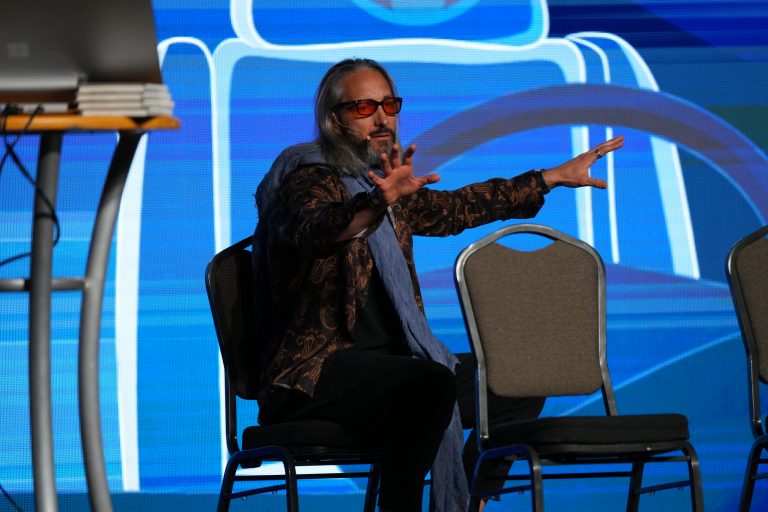I get why people love index funds.
They’re simple. They’re cheap. And if you believe most of the financial world, they’re the smartest, most “rational” way to invest.
After all, study after study shows that most actively managed funds underperform their benchmarks. The 2024 SPIVA report showed that the majority of U.S. active managers trailed their index over 5, 10, and 15 years.
William Sharpe said it decades ago: “Properly measured, the average actively managed dollar must underperform the average passively managed dollar… net of costs.”
It’s a clean math problem.
Lower fees, average returns, easy access.
So why not just “set it and forget it”?
Because for me, that phrase—set it and forget it—is the heart of the problem.
The Problem with “Set It and Forget It”
Index funds turn people into spectators. You hand your money to a faceless institution, hope the market gods are kind, and call that investing.
But true investing requires engagement. Understanding. Curiosity.
A connection between what you value and where your money flows.
Plus, index funds don’t give you cash flow.
The S&P 500 dividend yield sits around 1.2%—barely enough to buy a cup of coffee a day on every $10,000 invested. And when it comes time to retire or withdraw, volatility can become your enemy. A bad market year early in retirement can wipe out decades of discipline.
Morningstar calls this the “sequence-of-returns” risk—the idea that the order of your returns can destroy a portfolio even if your average return looks good on paper.
That’s not the financial freedom you’re seeking. Instead, it’s more like financial dependency—on timing, on markets, on things you can’t control.
(That’s why I talk so passionately about cash flow over accumulation.)
Too Diversified to Win
People think index funds mean diversification. In reality, they mean diworsification.
A handful of companies now drive most of the market’s performance. In 2025, the so-called “Magnificent Seven” make up roughly a third of the S&P 500. That means you can own five hundred companies, but your future still rides on less than ten.
And here’s the irony: those same companies—Apple, Microsoft, Amazon, Nvidia, Meta, Alphabet, Tesla—are the ones most people already rely on for their jobs, their devices, their data, their entertainment, and their AI. You’re doubling down on the same ecosystem that already controls so much of your life and attention.
So sure, you’re diversified on paper. But in reality, you’ve got a heck of a lot of concentration.
Investing in Companies I Don’t Believe In
There’s another important reason I stay out of index funds.
I care about where my money goes.
When you buy an index, you’re buying everything—the good, the bad, and the ugly.
As a result, you can wind up funding companies you wouldn’t personally support.
For me, I don’t want to profit from Monsanto’s destruction of our food supply or Coca-Cola’s addiction to sugar water. Those companies may make money, but I don’t believe they make the world better.
If you vote with your dollars, then index funds are voting blindly.
I’d rather choose where my dollars go—and align my investments with my values.
That’s part of understanding your Investor DNA—investing in alignment with your values, competencies, and focus.
Who’s Really in Control?
Here’s something most people don’t realize: the majority of the money in index funds sits in the hands of just a few institutions.
As of 2025, U.S. index funds and ETFs hold over $18 trillion in assets. The “Big Three”—BlackRock, Vanguard, and State Street—manage more than $25 trillion combined. They’re now the largest shareholders in over 80% of the S&P 500 and vote on roughly a quarter of all corporate shares in America.
That means your index fund isn’t just “the market.”
It’s a mechanism of control.
A small group of firms now influence which CEOs get hired, what policies companies adopt, and how shareholder votes are cast. You may think you’re spreading your power, but in reality, you’re consolidating it—into fewer and fewer hands.
Again, is that the world you want to help bring forth?
If it is, that’s ok. I don’t judge. But I do know who I am, what I believe in, and that I want my dollars aligned with my values.
The Alternative: Invest in You First
I’d rather invest in something I understand. Something I can influence. Something that pays me now, not someday.
That starts with me.
And if you’re not sure where to put your money, or whether index funds are right for you… then your journey starts with you.
Grow your skills and knowledge before you grow your portfolio.
When you invest in yourself—your business, your abilities, your network—you increase your capacity to produce. That’s the ultimate form of compounding. It’s how you transform money from a scoreboard into a tool for freedom.
I follow a simple framework:
Make more money. Keep more money. Grow your money.
But the order matters.
Most people start with “grow”—they chase returns in things they don’t understand, like index funds.
I start with “make.” Build the skill set that multiplies your value. Learn to earn more than the 5% you’re paying on a mortgage or the 8% you hope to make in a fund. Because when you are the asset, your upside is unlimited.
You can reduce risk with diversification or reduce risk with knowledge.
One spreads your attention; the other expands your potential.
The Real Risk: Playing Small
People think debt is risky. Or business is risky.
But the real risk is playing small.
The real risk is outsourcing your financial future to institutions whose only goal is to gather assets. The real risk is budgeting your way to safety, living below your means, and calling that wealth.
You can’t shrink your way to freedom.
You can only grow your way there.
Inflation punishes savers. Bureaucracy punishes spectators. But those who learn, produce, and create value—those who own rather than rent—win.
That’s why I don’t invest in index funds.
Because I’d rather invest in me.
What about you? Are you ready to invest in your greatest asset—yourself?
Save the Date for the Money Multiplier Masterclass
If you’re tired of the “set it and forget it” approach and ready to take control of your financial future, I’m hosting a three-day virtual Money Multiplier Masterclass this January 27th-29.
This isn’t another webinar telling you to cut back and save more. This is about identifying where your money is leaking, plugging those holes, and building a plan for real financial independence—the kind where investment income covers your lifestyle and work becomes optional.
Here’s what we’ll cover:
- How to identify and recover money you’re losing to unnecessary taxes, interest, fees, and insurance overpayments
- Building your personal Investor DNA so you invest in alignment with your strengths and values—not someone else’s generic advice
- Creating a wealth operating system that makes your money efficient, your decisions aligned, and your life worth living now—not someday
- The exact roadmap to economic independence in 10 years or less
I’ll bring the energy, humor, and practical strategies that have helped thousands of entrepreneurs break free from financial anxiety.
So save the date: January 27th-29.
And lookout for a chance to get your ticket to the Masterclass soon.
Because it’s time to stop being a spectator with your money. Let’s build something real together.




2 thoughts on “Why I Don’t Invest in Index Funds”
“But true investing requires engagement. Understanding. Curiosity.”
Love the way you wrote this, especially the word ENGAGEMENT. Thats such an apt word and one I’ve been personally experiencing with several of my investments in the last two years. To be engage means you feel the losses / mistakes far more but in turn you find a deeper joy and satisfaction in the wins/victories. After5 years of learning, trial and error, I am finally finding my stride and how I can uniquely add value. I have much to thank you for GG because you’ve deeply shaped my mindset and journey.
I like to be engaged and informed in my money allocations. First in growing my skills and knowledge. Thanks for sharing.